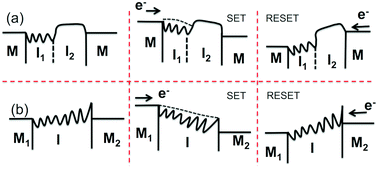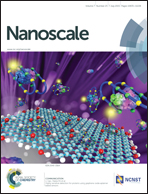Electronic resistance switching in the Al/TiOx/Al structure for forming-free and area-scalable memory
Abstract
Electronic bipolar resistance switching (eBRS) in an Al/TiOx/Al structure, where the TiOx layer was reactively sputter-deposited, was examined in conjunction with a structural analysis using transmission electron microscopy. A thin (3–5 nm) insulating Al(Ti)Ox layer was formed at the bottom Al electrode interface, which provided the necessary asymmetric potential barrier for the eBRS to emerge, whereas the top Al electrode interface appeared to have provided the fluent carrier (electron) injection. The set and reset switching were related to the trapping and detrapping of the carriers at the trap centers, the characteristic energy of which was ∼0.86 eV, across the entire electrode area. The general features of this material system as the feasible RS memory were insufficient: endurance cycle, <∼8000, and retention time at 85 °C, 106 s. However, the detailed analysis of the switching behavior based on the space-charge limited current conduction mechanism, and its variation with the switching cycles, provided useful information on the general features of the eBRS, which could also be applicable to other binary (or even ternary) metal–oxide RS systems based on the electronic switching mechanism.


 Please wait while we load your content...
Please wait while we load your content...